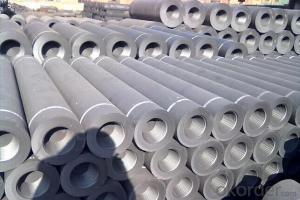When we talk about electrolysis, one of the first things that come to mind is the graphite electrodes. They are the unsung heroes of the process, silently doing their job, and yet, without them, the whole thing would just fall apart. But what exactly are these graphite electrodes, and why are they so important? Let’s dive into the world of electrolysis and find out more about these fascinating components.
First of all, graphite electrodes are made from a form of carbon called graphite. Graphite is chosen for its unique properties, such as high electrical conductivity, thermal conductivity, and chemical stability. These properties make it an ideal material for use in electrolysis. The electrodes are the heart of the process, conducting electricity and facilitating the chemical reactions that take place.
Now, let’s talk about the role of graphite electrodes in electrolysis. During electrolysis, an electric current is passed through a solution containing ions. The graphite electrodes act as the conductors, guiding the current to the solution. The positively charged electrode, called the anode, attracts the negatively charged ions, while the negatively charged electrode, called the cathode, attracts the positively charged ions. This separation of ions is what drives the chemical reactions that produce the desired products.
One of the key benefits of using graphite electrodes is their durability. Graphite is a strong and resilient material, capable of withstanding the harsh conditions often found in electrolytic cells. This durability means that the electrodes can be used for long periods without needing to be replaced, reducing the overall cost of the process.
Another advantage of graphite electrodes is their resistance to corrosion. In many industrial applications, the solutions used in electrolysis can be highly corrosive. However, graphite’s chemical stability allows it to resist corrosion, ensuring the longevity of the electrodes and the safety of the process.
But it’s not all about the technical aspects. There’s also an artistic side to graphite electrodes. When you look closely at a piece of graphite, you can see the intricate patterns and structures that make it unique. It’s like a work of art, created by nature itself. And when you use it in electrolysis, you’re not just conducting electricity, you’re also creating a beautiful dance of ions and electrons.
In conclusion, graphite electrodes are a crucial component of the electrolysis process. Their unique properties, such as electrical and thermal conductivity, chemical stability, and durability, make them indispensable in the production of various chemicals and metals. So next time you think about electrolysis, remember the graphite electrodes, the unsung heroes that make it all possible.

